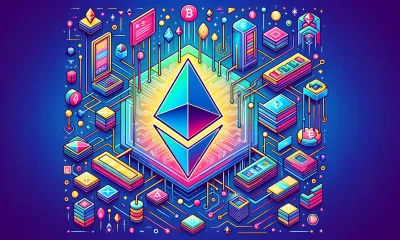Dogecoin Investor
Investing In Dogecoin (DOGE) – Everything You Need to Know

Securities.io maintains rigorous editorial standards and may receive compensation from reviewed links. We are not a registered investment adviser and this is not investment advice. Please view our affiliate disclosure.
Table Of Contents
Dogecoin USD (DOGE +1.65%)
Dogecoin (DOGE +1.65%) is a cryptocurrency that began as a joke in 2013, inspired by the “Doge” meme featuring a Shiba Inu. Created by Billy Markus and Jackson Palmer, it aimed to be a more accessible and less serious alternative to Bitcoin. With no supply limit, it's used for small transactions and online tipping. Despite its humorous start, Dogecoin has grown into a recognized digital currency with a strong, charitable community.
How Dogecoin (DOGE) Works
Dogecoin’s technical foundation is simple yet robust, making it ideal for microtransactions and fostering a culture of generosity and community-driven fundraising. It operates on a Proof-of-Work (PoW) consensus mechanism using the Scrypt algorithm, enabling merge-mining with Litecoin, which has enhanced its security by adding Litecoin’s mining power to the Dogecoin network.
Transaction Speed and Accessibility With a block time of just one minute, Dogecoin offers faster transaction times than many other PoW cryptocurrencies, making it an attractive choice for microtransactions. Its low transaction fees and quick confirmations have sustained its popularity among users for small transfers, donations, and tipping content creators.
Unlimited Supply and Inflationary Model Dogecoin has an unlimited supply, adding 5 billion DOGE to the network annually. This inflationary approach keeps transaction fees low and encourages continuous use rather than hoarding, making Dogecoin more viable as a transactional currency than as a store of value.
A Unique Twist: The Creation of the Department of Government Efficiency (D.O.G.E.)
In a landmark political move, U.S. President-elect Donald Trump recently appointed Elon Musk to lead the newly formed Department of Government Efficiency—referred to, with intentional irony, as “D.O.G.E.” This initiative directly nods to Dogecoin and its “Doge” meme roots, symbolizing Musk’s aim to streamline and “meme-ify” U.S. government operations for greater efficiency.
Musk’s Vision for the D.O.G.E. Department Musk, an outspoken advocate for smaller government, has often criticized excessive bureaucracy and what he sees as obstructive regulations. His new role aligns with these views, as he and his co-leader, Vivek Ramaswamy, intend to dismantle regulatory roadblocks, cut federal spending, and eliminate redundant departments. This role gives Musk, a known supporter of Dogecoin, an opportunity to influence U.S. policy and potentially create a more favorable environment for cryptocurrencies.
The D.O.G.E. Department, while not an official government agency, aims to function as an external advisory body, providing “guidance and efficiency strategies.” However, with Musk’s influence, it could signal a shift toward a more innovation-friendly regulatory landscape.
The History of Dogecoin (DOGE)
Dogecoin’s journey from meme to mainstream acceptance is both unique and significant:
- 2013: Created by Markus and Palmer, Dogecoin launched as a playful alternative to Bitcoin, quickly gaining traction as a “friendly” digital currency.
- 2014: The Dogecoin community raised over $30,000 to send the Jamaican bobsled team to the Sochi Winter Olympics and another $55,000 to sponsor NASCAR driver Josh Wise, solidifying its status as a charitable and community-driven cryptocurrency.
- 2015-2018: Dogecoin continued to grow in popularity, particularly during the cryptocurrency boom of 2017. It maintained a loyal base, even as market volatility impacted other digital assets.
- 2021: Dogecoin gained mainstream attention as high-profile figures like Elon Musk and Mark Cuban publicly supported it. Musk’s tweets, in particular, became a major factor influencing Dogecoin’s price movements. By May, Dogecoin reached an all-time high of over $0.70, buoyed by Musk’s appearance on Saturday Night Live.
- 2022-2023: The Dogecoin development team focused on improving the network’s efficiency and reducing fees, making it even more suitable for microtransactions. Despite market volatility, Dogecoin solidified its status as a top “meme coin” and garnered more merchant adoption.
What the D.O.G.E. Department Could Mean for Dogecoin’s Future
Musk’s role as the head of the Department of Government Efficiency brings significant implications for Dogecoin and the broader cryptocurrency landscape:
- Symbolic Representation: Naming the department “D.O.G.E.” has already generated substantial interest in Dogecoin, underscoring its status as a cultural icon in the cryptocurrency space.
- Potential for Crypto-Friendly Policies: Musk’s focus on efficiency and reducing bureaucratic red tape may lead to a more favorable regulatory environment for cryptocurrencies, potentially easing restrictions that impact crypto transactions and adoption.
- Increased Adoption and Use Cases: With the D.O.G.E. Department gaining media attention, Dogecoin may experience further adoption, both as a digital currency and as a symbol of streamlined governance. This association could encourage new integrations, particularly as Musk continues to advocate for broader crypto use.
Social Media Influence and Community Support
Dogecoin’s community and social media presence remain central to its success. Platforms like X (formerly Twitter) and Reddit have amplified interest in Dogecoin, with communities frequently rallying around Musk’s support and speculating on Dogecoin’s potential new role under his leadership. The appointment of Musk as the “efficiency tsar” only fuels this enthusiasm, drawing both retail and institutional investors.
Risks and Considerations
While Dogecoin’s new political associations bring optimism, they also introduce certain risks:
- Volatility: Dogecoin’s price has been historically driven by social media and hype, leading to potential price swings based on sentiment rather than intrinsic value.
- Environmental Impact: Dogecoin’s PoW model has raised concerns over its energy consumption, especially as environmental awareness grows in the cryptocurrency space.
How to Buy Dogecoin (DOGE)
Currently, Dogecoin (DOGE) is available for purchase on the following exchanges:
Uphold – This is one of the top exchanges for United States residents that offers a wide range of cryptocurrencies. Germany & Netherlands are prohibited.
Uphold Disclaimer: Terms Apply. Cryptoassets are highly volatile. Your capital is at risk. Don’t invest unless you’re prepared to lose all the money you invest. This is a high-risk investment, and you should not expect to be protected if something goes wrong.
Coinbase – A publicly traded exchange listed on the NASDAQ. Coinbase accepts residents from 100+ countries, including Australia, Canada, France, Germany, Netherlands, Singapore, the United Kingdom, and the United States (excluding Hawaii).
Binance – Accepts Australia, Singapore, and most of the world. Canadian & USA residents are prohibited. Use Discount Code: EE59L0QP for 10% cashback on all trading fees.
Kraken – Founded in 2011, Kraken is one of the most trusted names in the industry and offers trading access to over 190 countries, including Australia, Canada, Europe, and the United States (excluding Maine, New York, and Washington state).
Kraken Disclaimer: Not investment advice. Crypto trading involves risk of loss. Payward European Solutions Limited t/a Kraken is authorised by the Central Bank of Ireland.
How to Store Dogecoin (DOGE)
Securing Dogecoin (DOGE) investments, especially for long-term holding or substantial amounts, necessitates a robust storage solution.
Hardware wallets, known for their enhanced security, are a top choice for safeguarding Dogecoin (DOGE) holdings. These devices store cryptocurrency offline in “cold storage,” effectively insulating them from online vulnerabilities and hacking threats. A look at some of the best solutions can be found HERE.
For those unsure of hardware wallets, Dogecoin (DOGE) is also widely supported by non-custodial software wallets. A look at some of the best software wallet solutions can be found HERE.
For Dogecoin (DOGE) users, choosing the right storage option is crucial, with hardware and non-custodial software wallets providing a secure solution for substantial investments and long-term holding.
Dogecoin (DOGE) – A Symbol of Innovation and Government Reform
As Dogecoin looks to the future, its role is evolving from a lighthearted “memecoin” to a potential player in the realm of digital finance and public sector efficiency. With Elon Musk now leading the U.S. Department of Government Efficiency (D.O.G.E.), Dogecoin finds itself symbolically linked to a mission of reducing bureaucracy and modernizing government processes. This unprecedented alignment with federal policy not only elevates Dogecoin’s visibility but also hints at broader applications and regulatory openness that could foster its use in practical, real-world scenarios.
Looking ahead, Dogecoin’s vibrant community and Musk’s political influence could drive its adoption as a preferred digital currency for microtransactions, charitable initiatives, and even larger financial applications. As DOGE continues to benefit from both technical advancements and high-profile endorsements, it stands at the crossroads of cultural icon and practical tool, ready to shape the next chapter in the cryptocurrency landscape.
Daniel is a big proponent of how blockchain will eventually disrupt big finance. He breathes technology and lives to try new gadgets.
You may like


Investing In Bitcoin (BTC) – Everything You Need to Know


Investing In Ethereum (ETH) – Everything You Need to Know


Investing In Solana (SOL) – Everything You Need to Know


10 Reasons to Invest in Bitcoin


Understanding the Ethereum Virtual Machine (EVM)


How to Buy Dogecoin | Buy DOGE in 4 Steps (June 2025)